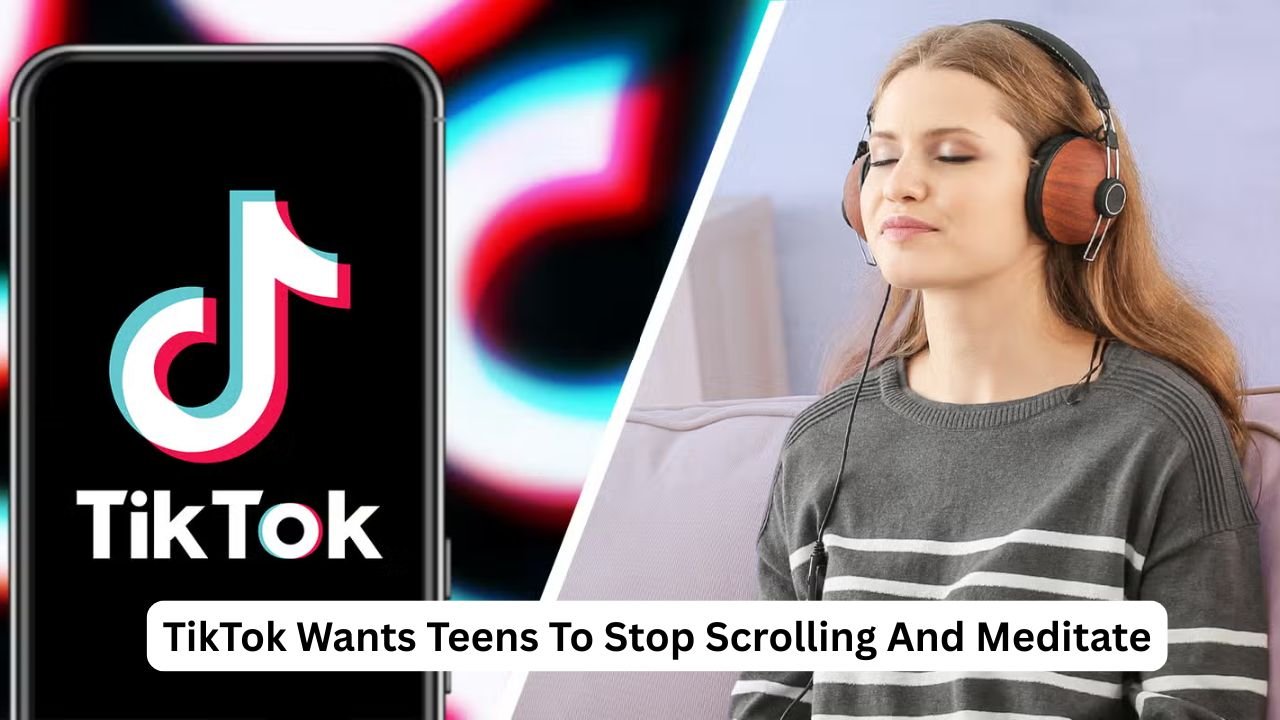In an unexpected but timely move, TikTok has launched a feature that interrupts late-night scrolling in favor of meditation—particularly targeting teenagers. The platform, known for its endless stream of short-form videos, now wants its young users to take a step back, breathe, and rest.
This initiative, part of a growing digital wellness push, reflects both the increasing awareness of social media’s impact on mental health and the mounting pressure on tech companies to do something about it.
Why TikTok Is Doing This
Teenagers are some of TikTok’s most active users. However, they’re also among the most vulnerable when it comes to the negative effects of excessive screen time. One major issue is “doomscrolling”—the habit of endlessly scrolling through content late into the night, even when it’s clearly time to sleep. This behavior has been linked to poor sleep quality, anxiety, depression, and a decline in emotional well-being.
Studies show that teens who spend hours on screens at night tend to get less sleep, suffer from attention issues, and experience greater emotional dysregulation. These effects are worsened by TikTok’s algorithm, which serves up highly personalized, engaging content—making it incredibly difficult to stop scrolling.
Recognizing this pattern and facing increased scrutiny from regulators and health experts, TikTok has taken a notable step: guiding teens toward mindfulness at night.
What the New Feature Does
The new feature, often referred to as “Meditation in Sleep Hours,” is automatically activated for users under the age of 18. It kicks in at 10 PM local time, the hour many teens should ideally be winding down.
Here’s what happens:
- Teens scrolling after 10 PM begin to see gentle prompts suggesting they take a break.
- If they continue, TikTok begins to interrupt their feed with guided meditation videos, complete with calming music and breathing exercises.
- These segments are designed to create a moment of reflection, relaxation, and—ultimately—detachment from the app.
- If scrolling continues beyond that, the app brings up a full-screen prompt urging the user to pause and engage in rest.
For adults, this wellness feature is optional and can be turned on through the app’s Screen Time settings.
Response and Reception
TikTok says early responses are encouraging. In pilot testing, 98% of teen users left the meditation feature enabled, showing little resistance to the new tool. While this doesn’t confirm they’re meditating regularly, it suggests the feature isn’t seen as annoying or intrusive—a good sign when dealing with teenagers.
Mental health experts are cautiously optimistic. They point out that this isn’t a fix for everything, but agree that embedding wellness reminders into the core user experience is a step in the right direction. The feature’s tone is important—it doesn’t shame users for their habits, but instead invites them to make a healthy choice using the same kind of visual and auditory engagement TikTok is known for.
A Broader Strategy
TikTok’s meditation feature doesn’t exist in isolation. It’s part of a larger strategy to address the mental health concerns increasingly associated with social media. As public concern about teen mental health grows, so does the pressure on platforms to take responsibility.
Lawsuits and investigations have accused TikTok and similar platforms of designing products that are intentionally addictive and harmful to children. In this context, wellness features help companies demonstrate that they’re listening and trying to help—even if some critics remain skeptical.
To further show commitment, TikTok has also pledged $2.3 million in ad credits to support 31 mental health organizations worldwide. These funds allow nonprofits to promote educational and support content on the platform, giving users access to trusted mental health resources.
Will It Work?
Whether or not TikTok’s meditation feature significantly improves teen well-being remains to be seen. Critics argue that while meditation is helpful, it doesn’t solve deeper issues like algorithmic addiction, body image concerns, or harmful content exposure. And because the app itself remains highly engaging, the temptation to disable or ignore the wellness prompts may grow over time.
Still, this effort does reflect a shift in how platforms are thinking. Rather than just offering parental controls or passive screen-time tracking, TikTok is now actively interrupting harmful behavior patterns—a strategy that’s more assertive and, potentially, more effective.
It’s also part of a broader tech trend: integrating mindfulness and wellness into everyday digital experiences. Apps like Headspace and Calm made meditation mainstream. Now, platforms like TikTok are embedding those principles directly into user behavior cycles.
Final Thoughts
TikTok’s new sleep-time meditation feature is a bold experiment in nudging young users toward healthier habits. By disrupting the late-night scroll with calm, meditative content, TikTok is acknowledging a growing truth: social media companies are no longer just entertainment platforms. They shape behavior, influence mental health, and now—perhaps—have a duty to help users disconnect, not just engage.
Whether this is a meaningful change or just a smart PR move is still up for debate. But it signals something new: a willingness, however tentative, to prioritize well-being over watch time.

